Tag: Economics
-
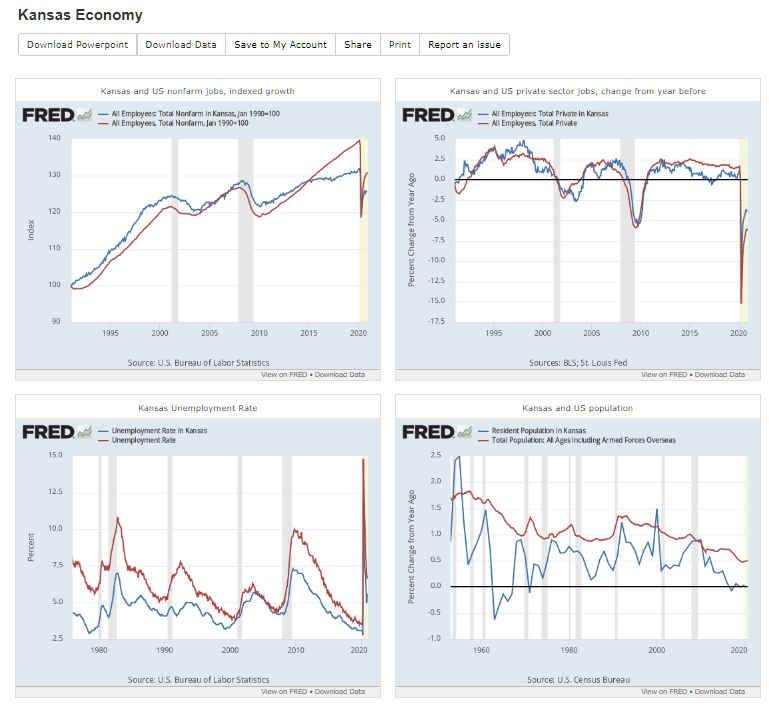
Kansas economic dashboard
Charts of economic indicators for Kansas, compared to the nation and surrounding states.
-
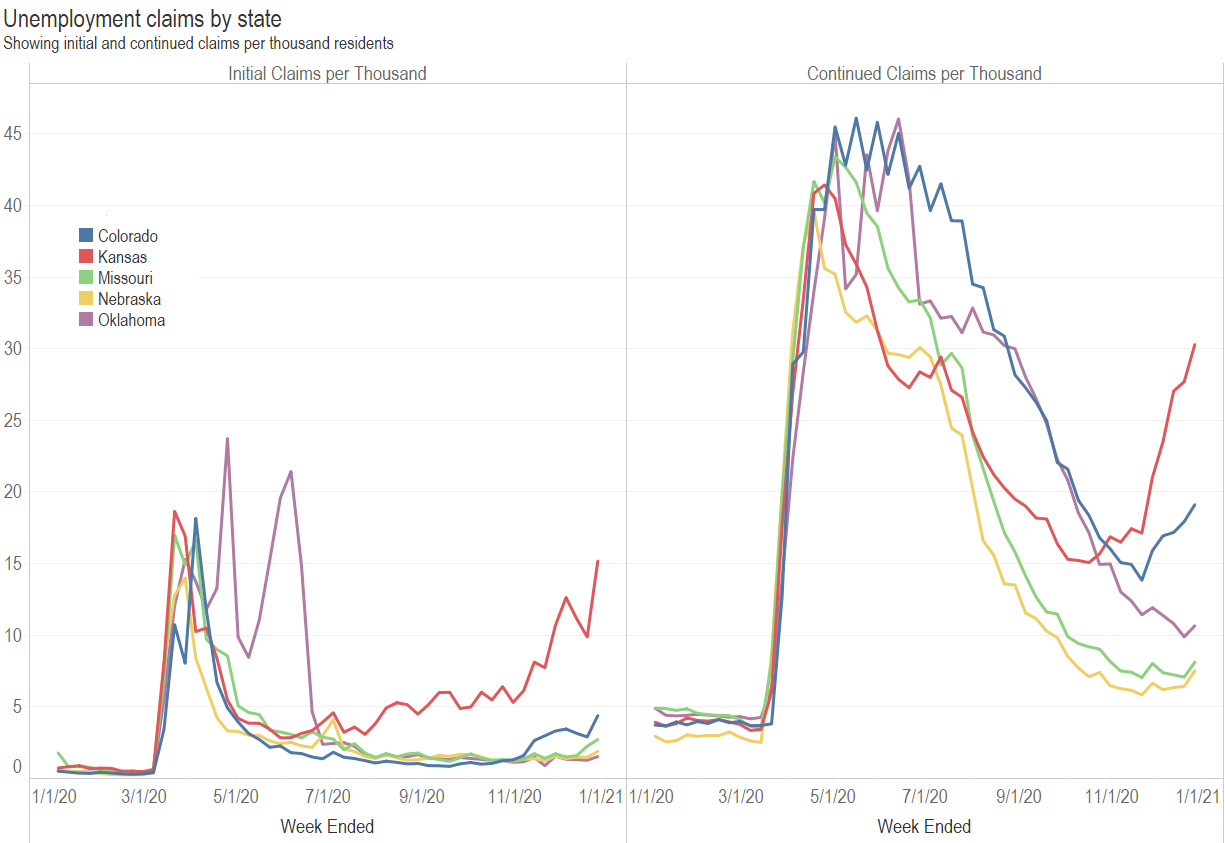
Kansas unemployment claims are high and rising
A visualization of unemployment insurance claims by state, adjusted for population, shows Kansas as an outlier among states.
-

Wichita economic dashboard
Charts of economic indicators for Wichita, compared to Kansas and the United States.
-
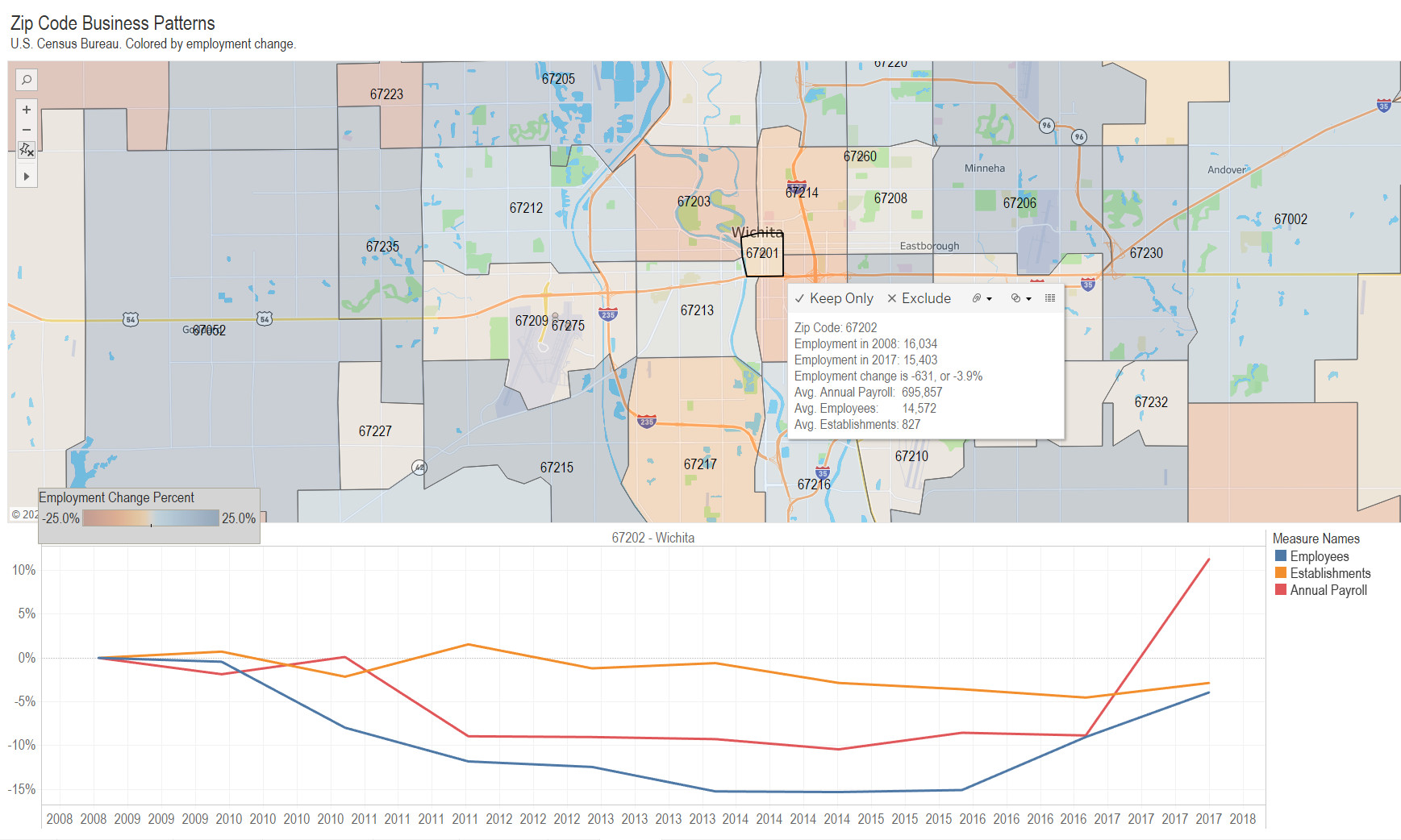
Zip code business patterns
Employment, establishment count, and annual payroll presented in an interactive visualization.
-

Zip code populations
An interactive visualization of population by zip codes shows the parts of Wichita that are growing.
-
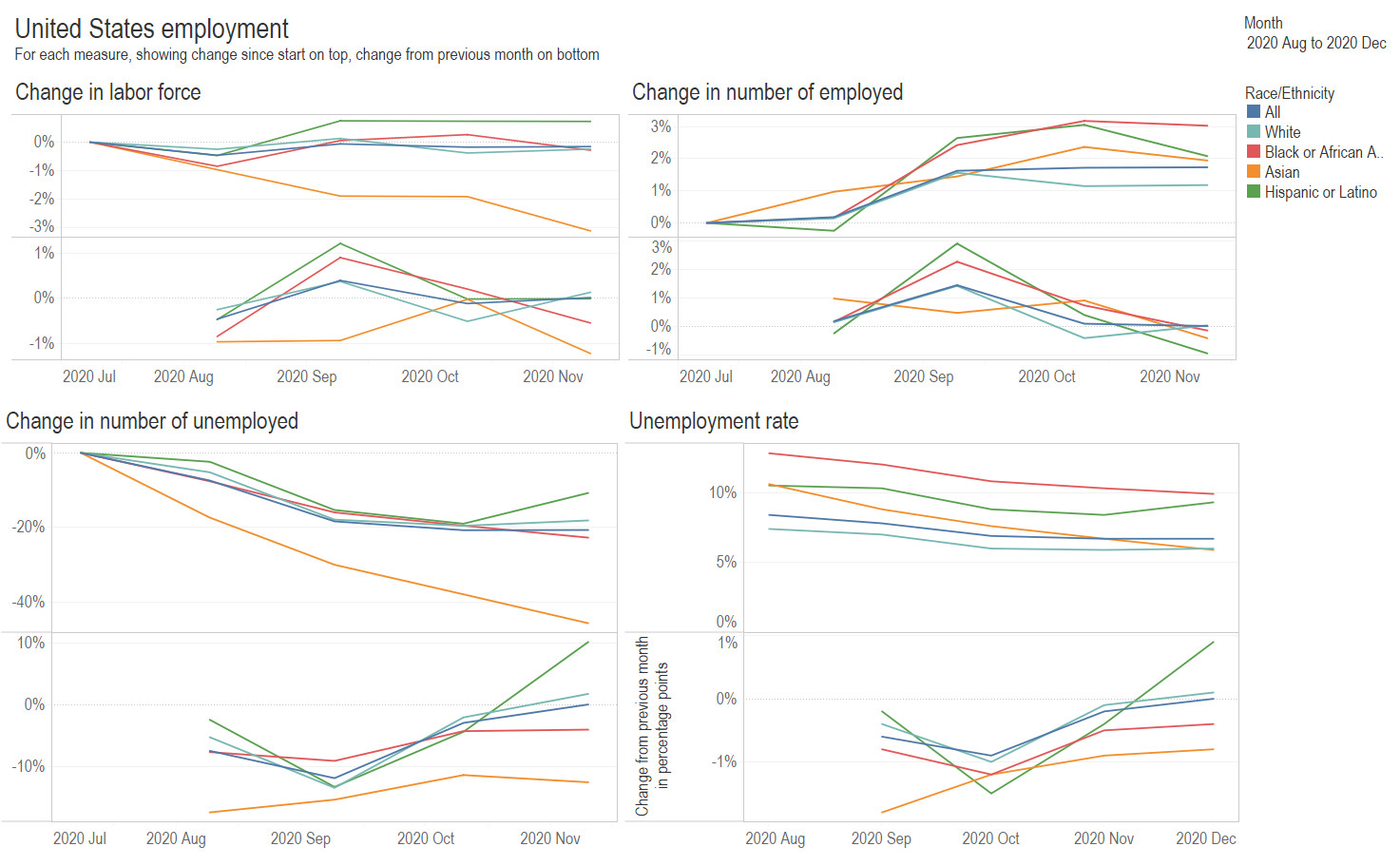
National employment, December 2020
Jobs fell in December 2020, marking the first loss since the recovery from the pandemic began.
-

Wichita jobs and employment, November 2020
For the Wichita metropolitan area in November 2020, the number of unemployed persons is up, the unemployment rate is up, and the number of people working is down, all by large amounts, when compared to the same month one year ago. The recent trend, however, is mixed.
-
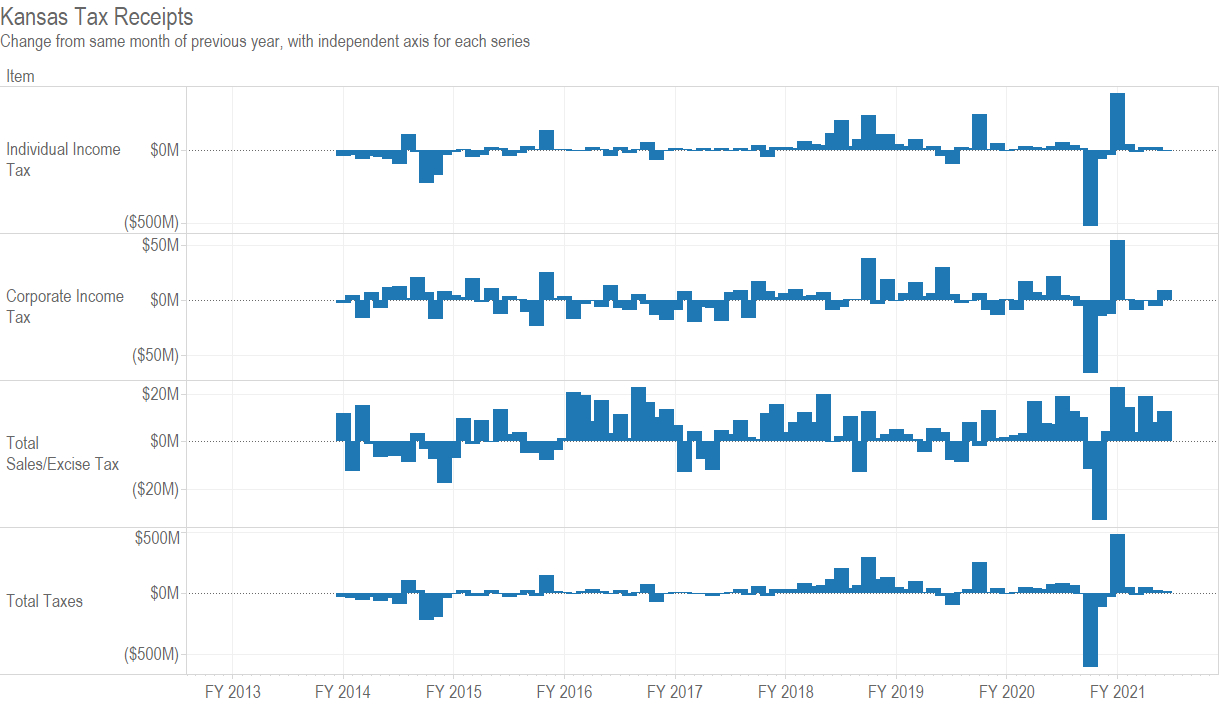
Kansas tax revenue, December 2020
For December 2020, total Kansas tax revenue was 1.8 percent greater than last December 2019. Over the six months of the current fiscal year, tax revenue is 16.6 percent higher than at the same point of the previous fiscal year.
-
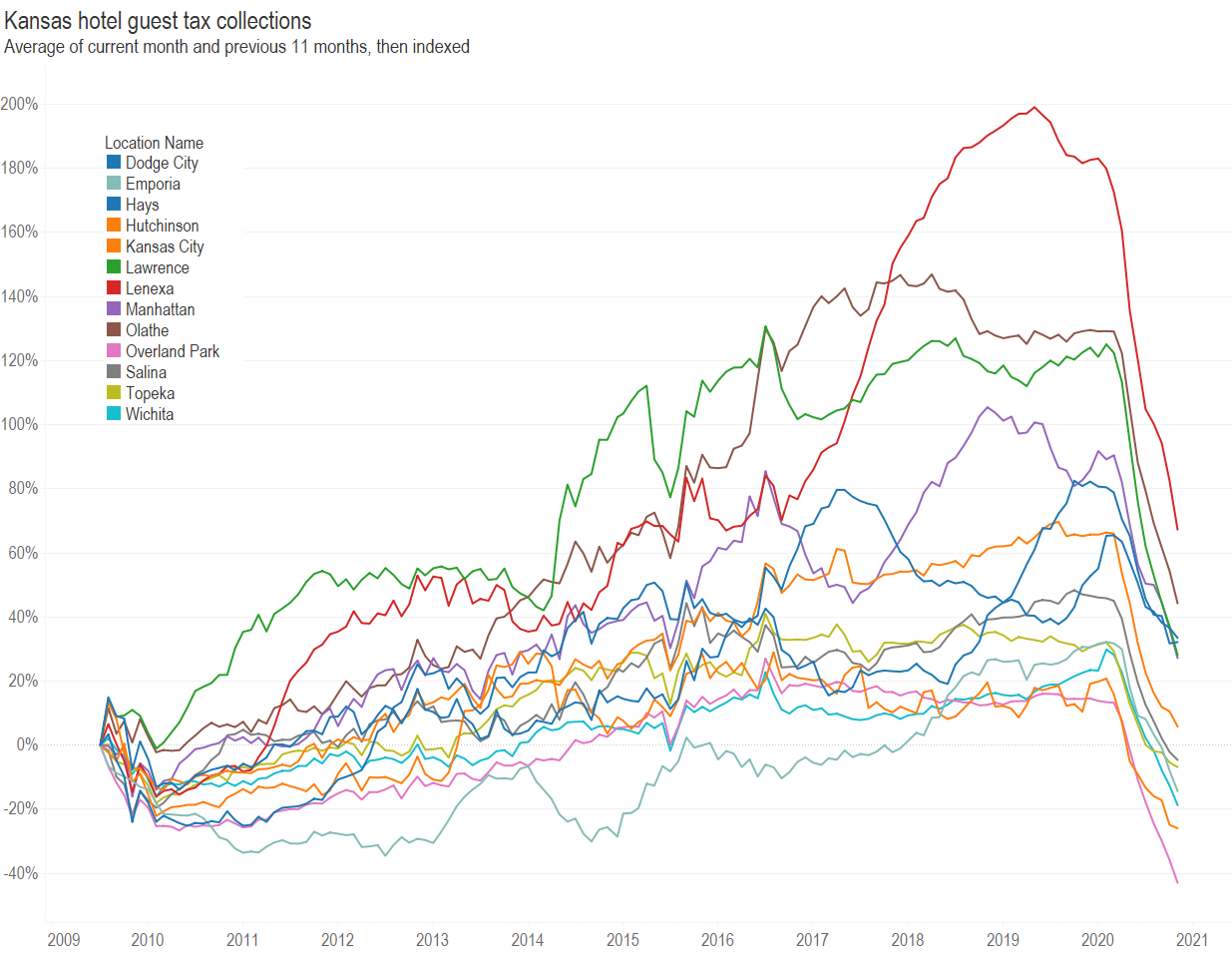
Updated: Kansas hotel guest tax collections
Kansas hotel guest tax collections presented in an interactive visualization. Updated with data through November 2020.